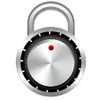Easily recover those files you accidentally delete with this intuitive and streamlined Windows program
Easily recover those files you accidentally delete with this intuitive and streamlined Windows program
Vote: (14 votes)
Program license: Trial version
Developer: Runtime
Version: 5.61
Works under: Windows
Vote:
Program license
(14 votes)
Trial version
Developer
Version
Runtime
5.61
Works under:
Windows
Pros
- Efficient and thorough data recovery
- User-friendly interface with a helpful wizard for beginners
- Advanced options for experienced users
- Supports a wide array of filesystems
- Capability to recover data from unrecognized drives by Windows
Cons
- Scan times can be lengthy for large drives
- Interface may feel dated to some users
- Recovery is not always possible, depending on damage severity
An Indispensable Tool for Data Recovery: GetDataBack
Introduction to GetDataBack
GetDataBack is a robust data recovery software designed to salvage lost files from a variety of unfortunate scenarios. Whether you're dealing with accidental deletions, virus attacks, system crashes, or drive formatting, GetDataBack promises to restore what you feared was gone forever. The software particularly shines when recovering data from drives with corrupted partitions, file tables, or directories.
Comprehensive Recovery Features
The strength of GetDataBack lies in its deep scan capabilities. It flawlessly retrieves data even when Windows no longer recognizes the drive – a testament to its thorough extraction processes. For users with little technical expertise, the software fosters a sense of accessibility with a straightforward, step-by-step wizard that simplifies the recovery operation. This self-guided process ensures even novices can attempt data recovery without further complexities.
For the more advanced users, the tool offers a suite of intricate options to enhance the recovery outcome. The ability to scrutinize the scan log, delve into filesystem specifics or examine detailed file and directory information allows for a tailored recovery experience. Furthermore, selecting specific sectors for scanning or deploying an extensive search for file systems adds to the finesse and customization potential of GetDataBack.
User Experience and Efficiency
The balance between simplicity for casual users and sophistication for power users is a key appeal of GetDataBack. Its interface, though not the most modern in aesthetics, remains functional and user-friendly. When it comes to performance, GetDataBack does not disappoint. Recovery times can vary depending on the size and state of the drive, but the software generally operates efficiently and with a high success rate in data retrieval.
However, patience is sometimes required, especially during intensive scans of large drives. Still, the wait tends to payoff, as the software's precision in locating and restoring files is impressive. It's important for users to understand that while GetDataBack is powerful, no data recovery can be guaranteed. The success of recovery often depends on the extent of the damage and the time elapsed since the data loss.
Flexibility and Support
A notable feature in GetDataBack is its support for a variety of filesystems, including FAT, NTFS, exFAT, and EXT, ensuring a high level of versatility regardless of the disk architecture in use. Furthermore, the ability for users to interact with Runtime's DiskExplorer provides an advanced layer of involvement, offering more insightful data handling and recovery options.
On the support front, users of GetDataBack can rely on a dedicated help system and clarity in navigating through recovery options. The manufacturer also provides sufficient documentation and customer support, ensuring assistance is available for those who need it during the data recovery process.
Conclusion
GetDataBack establishes itself as a formidable contender in the data recovery arena, suitable for a wide range of users and scenarios. The tool excels in both user-friendliness and powerful performance, making it a valuable asset when data loss strikes. While it may not feature the most modern interface design, the functionality and reliability remain uncompromised.
Pros
- Efficient and thorough data recovery
- User-friendly interface with a helpful wizard for beginners
- Advanced options for experienced users
- Supports a wide array of filesystems
- Capability to recover data from unrecognized drives by Windows
Cons
- Scan times can be lengthy for large drives
- Interface may feel dated to some users
- Recovery is not always possible, depending on damage severity




